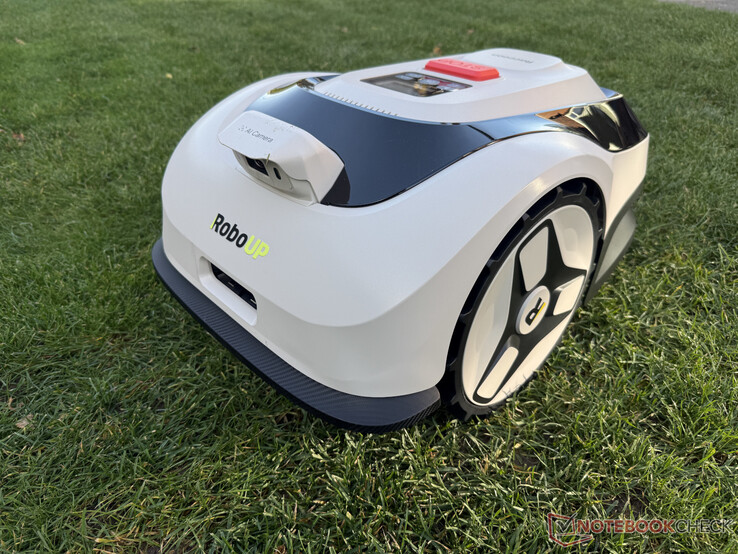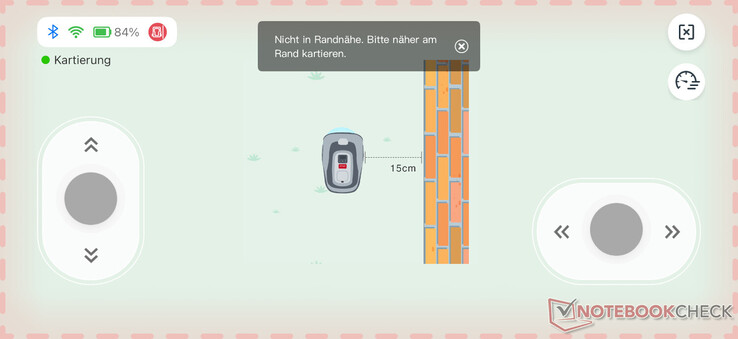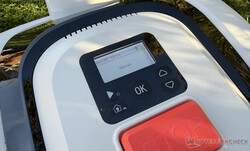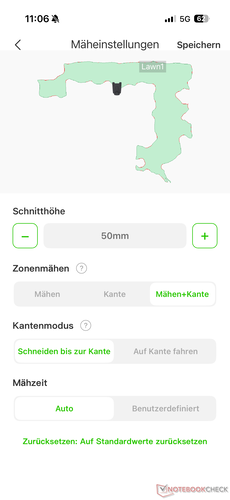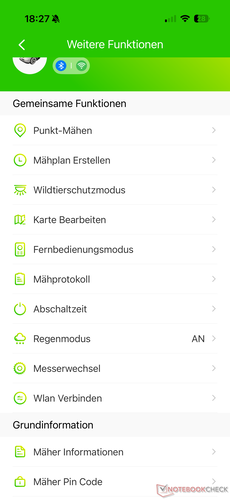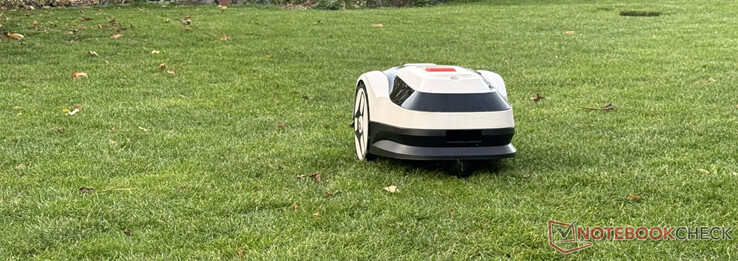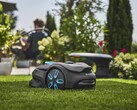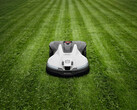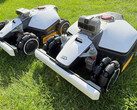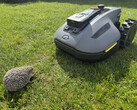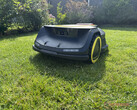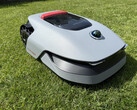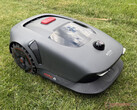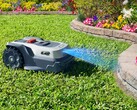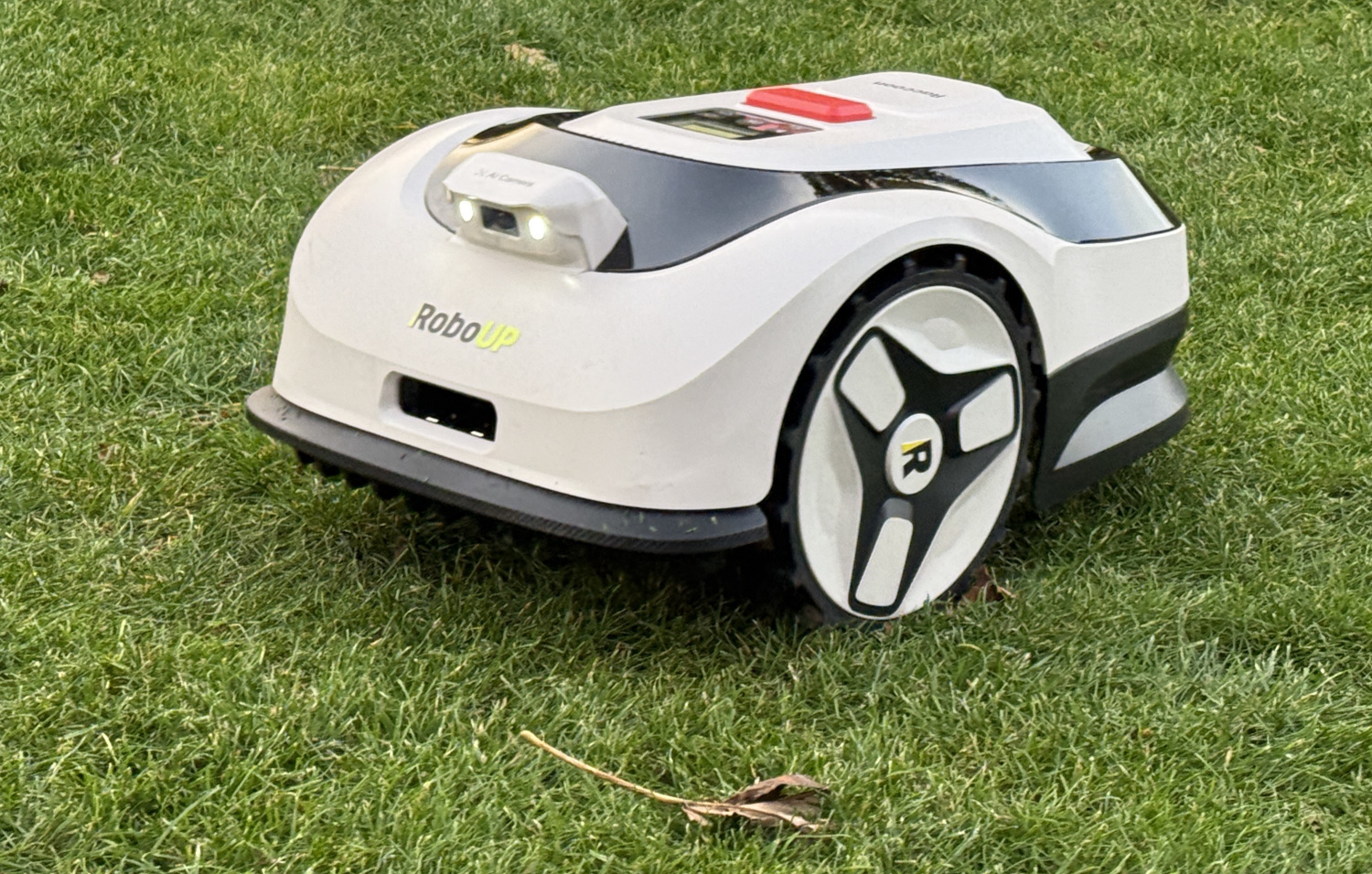
Affordable robotic lawnmower without wire for small gardens: RoboUp Raccoon 2 SE review
Marcus Schwarten 👁 (translated by DeepL / Marcus Schwarten) Published 🇩🇪
RoboUp Raccoon 2 SE conclusion: Inexpensive garden helper
The RoboUp Raccoon 2 SE really didn't do everything perfectly in our test. In particular, the chaotic or random approach to larger areas up to 500 square meters is at the expense of efficiency and thoroughness. There are also a few deductions when it comes to obstacle detection, although the manufacturer could certainly make improvements here with software updates. In addition, the possible applications are limited due to the specifications.
However, we must undoubtedly put this in relation to the very reasonable price of this compact robot lawn mower, which does not require a boundary wire or RTK station. If we take this into account, the RoboUp Raccoon 2 SE positions itself as a less than perfect, but very affordable solution
It is interesting for all owners of smaller gardens with clear boundaries who no longer want to mow the lawn themselves and don't want to spend too much money. It is also exciting for anyone who doesn't want a robotic lawnmower with an app.
Pros
Cons
Price and availability
The official sales launch of the RoboUp Raccoon 2 SE is planned for the 2026 gardening season. Before then, it will be available from November 11, 2025 in the crowdfunding campaign on Kickstarter.
It will be available from $359 - taking into account the risks associated with such campaigns, of course. The recommended retail price will later be $629.
Table of Contents
- RoboUp Raccoon 2 SE conclusion: Inexpensive garden helper
- Features and scope of delivery: Compact robot lawn mower with camera
- Setup and maintenance: Automatic or manual mapping
- App and operation: robotic lawnmower also works without an app
- Navigation and obstacle detection: without RTK and cable
- Mowing performance and edge cutting: Chaotic
- Running time and volume: Quiet robotic lawnmower for city gardens
RoboUp has already made a name for itself in the market for robotic lawn mowers without a perimeter wire. Last year we had the T1200 Pro in the test, which made a reliable impression overall.
For the 2026 gardening season, RoboUp is now launching a completely new model, the Raccoon 2 SE, which takes a different approach in some areas and is offered at a very affordable price. Our RoboUp Raccoon 2 SE test reveals whether it's worth buying, what the robotic lawnmower can do and who it's suitable for.
Data sheet RoboUp Raccoon 2 SE
| Property/model | RoboUp Raccoon 2 SE |
|---|---|
| Area | < 500 m² |
| Navigation and obstacle detection | VSLAM + INS |
| Mower | Mowing disk |
| Number of blades | 3 |
| Cutting width | 20 cm |
| Cutting height | 3 - 8 cm |
| Cutting height adjustment | electric |
| Slope | 36 % |
| Display | yes |
| Battery capacity | 5 Ah |
| Weight | approx. 12 kg |
| Dimensions | 61.7 x 40.8 x 28.8 cm |
| Water resistance | IPX6 |
| Garage included in scope of delivery | no |
| Number of blades included in the scope of delivery | 3 + 9 pieces |
| Color | Grey |
| RRP | from $359 |
Features and scope of delivery: Compact robot lawn mower with camera
The RoboUp Raccoon 2 SE is designed for lawns of up to 500 square meters. It can map these completely independently without the need for a boundary wire and RTK antenna. Instead, this model uses an AI-trained camera that automatically recognizes the lawn boundary. However, this requires a completely closed lawn area with clearly recognizable transitions, whereby up to three areas can be created.
While the camera sits in a small hump and captures the area in front of the robot lawn mower, in the top a simple display, five buttons for operation, the obligatory stop button in bright red and a rain sensor are located. There is a practical recessed grip at the rear, which makes it easy to carry the robot lawn mower, which weighs around 12 kg. The workmanship is good, the design quite sober in the colors of a raccoon.
On the underside, in addition to the two large drive wheels at the front and a third wheel at the rear, there is the mower deck. The rotating mowing disk is equipped with three free-swinging blades and has a cutting width of 20 cm. This is not big, but is sufficient for a model designed for small gardens.
A few steps are required before you can start mowing. In addition to installing the charging station (power connection and fastening with ground screws), the front bumper must be screwed to the underside of the device as a bumper. The necessary tools are included as well as two beacons (more on this below) and three sets of replacement blades. The RoboUp Raccoon 2 SE is then ready for use.
Setup and maintenance: Automatic or manual mapping
The RoboUp app is not absolutely necessary for the Raccoon 2 SE. It can also be set up and used completely without a smartphone using the control unit on the top of the device. This means it can even be used by smartphone-averse people with small lawns.
Raccoon 2 SE: Best Value Robot Mower for Small Lawns
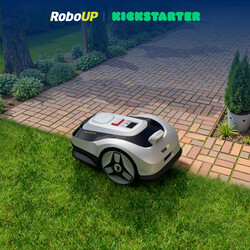
The RoboUp Raccoon 2 SE isn't just the perfect robotic lawnmower for small lawns. It's also launching at a attractive early bird price starting at just $359. VIPs can even get it from $299 with pre-launch deposit.
The Raccoon 2 SE makes lawn mowing incredibly easy: Just Press Play! The robotic lawnmower also offers these additional benefits:
- No wires, no RTK
- Powerful 5Ah Battery with Auto Recharge
- Dual Mapping
- AI Obstacle Avoidance
Secure your Raccoon 2 SE now at a special low price!
There are more options with the app. After setting up the connection with Bluetooth and WLAN, which is well explained and worked without any problems in the test, the usual mapping of the lawn area is required first. There are two options to choose from here.
On the one hand, the robotic lawnmower can carry out the mapping completely independently. In this case, the Raccoon 2 SE used its camera and AI lawn recognition to follow the edge of the lawn once around the perimeter during the test. Overall, this worked well. It skipped areas with little grass and visible soil as well as areas with a lot of fallen leaves (unfortunately, the test device was available towards the fall) during the mapping process, but still took some of them into account later when mowing.
Alternatively, manual mapping is also possible. In this case, the robotic lawnmower is piloted for an introductory lap using two virtual joysticks on the smartphone display. This works well in principle, as the controls are pleasant and not too sensitive. This allows the robotic lawnmower to be piloted precisely along the boundaries of the lawn.
Here too, however, the Raccoon 2 SE's territory must be completely enclosed. If, for example, there is an open transition from the lawn to the neighboring property or another area that is not to be mowed, the lawn can be mapped (under protest on the display). However, the mower will still mow all the green that it can reach without a physical boundary and thus leave the assigned area.
The Raccoon 2 SE from RoboUp can mow up to three lawns in total. However, the transitions must be marked with beacons in the form of large plastic disks, two of which are included in the scope of delivery. Ultimately, this is not a particularly elegant solution. This compact robotic lawnmower is therefore more suitable for residents of properties with only one lawn area.
Maintenance and cleaning are kept simple as usual. A screwdriver is required to change the blades. Thanks to its IPX6 rating, the Raccoon 2 SE can be cleaned with a garden hose.
App and operation: robotic lawnmower also works without an app
As already mentioned, the app is not mandatory for the Raccoon 2 SE. The RoboUp Raccoon 2 SE can be operated entirely via the control panel on the robotic lawnmower. In addition to a display, five buttons are available here. However, it is of course much more convenient via the app.
If the RoboUp app is used, it not only enables the mapping of up to three lawn areas, but also opens up a number of other options. In addition to remote control for manual (re-)mowing, these include the scheduling of predefined working times.
The mapped lawn area can be seen on the overview. However, it does not provide any live progress. You can only see the figures for the percentage mowing time and the remaining working time. In addition to viewing the status of battery, WLAN and Bluetooth, the app also allows you to set the mode, cutting height, edge mode and duration. When edging, you can choose to cut right up to the edge of the lawn or, in the case of ground-level transitions, it can also drive on the edge.
Navigation and obstacle detection: without RTK and cable
Unfortunately, the Raccoon 2 SE did not work systematically on our test area of around 250 square meters. Instead, it mowed the area randomly, following one path to the edge and then turning at a random angle to follow the next path. This is obviously not efficient.
The Raccoon 2 SE needs around 8.5 hours of mowing time to achieve a reasonably comprehensive coverage. For a 25-square-metre terraced garden, this is just over an hour. Systematically navigating, but usually more expensive robotic mowers such as the Mammotion Yuka mini ($999 on Amazon) or the Mova 1000 are of course much faster and also more reliable in terms of area coverage.
Alternatively, the RoboUp Raccoon 2 SE can also cover areas of up to 80 square meters in parallel paths using the target area mode. However, the lawn area must also be clearly defined for this. In addition, the robotic lawnmower must be moved into the area manually. It cannot start from the station, which means that it is not possible to systematically mow the lawn during regular operation (with planned mowing times).
Overall, the Raccoon 2 SE navigated reliably across our test area for the most part. It only needed help in a few exceptional cases. Once it got completely stuck in a bed of bark mulch at the edge of the mowing area - unfortunately not the only time it left the previously mapped area. And occasionally it also got stuck in a narrow dead-end area at the edge and then found it difficult or impossible to get out again. For the most part, however, it has mastered narrow sections up to 80 cm.
In addition to its AI camera, the Raccoon 2 SE also uses a bumper at the front to detect and avoid obstacles. In the test, the robotic lawnmower made a solid impression in this test criterion. The Raccoon 2 SE successfully detected all large obstacles such as trees, swing frames and the like and reliably avoided them.
With smaller objects, it sometimes became a little less reliable. With a ball the size of a handball, it always turned around with some distance. However, it always ran over a tennis ball. With a piece of garden hose and our hedgehog dummy, the results were mixed. It stopped on most of the approaches. Occasionally, however, the bumper had to step in, which would certainly not be as good for a real animal as for our dummy.
The garden hose was also rolled over in rare cases, meaning that the obstacle detection system works well most of the time, but is not 100 percent reliable. Therefore, from our point of view, the Raccoon 2 SE (with the current software version) is more suitable for gardens where there is usually nothing lying around on the lawn. However, future firmware updates can bring improvements here.
Mowing performance and edge cutting: Chaotic
The cutting width of the Raccoon 2 SE is relatively small at 20 cm. On two test areas, the mower with its three blades reliably cut the lawn to the set height of between 30 and 80 mm. The bigger problem here is the chaotic navigation already described for areas over 80 square meters, which cannot lead to guaranteed coverage and an even mowing pattern. However, with sufficient and regular use, areas can be kept in a reasonably uniform shape.
In addition to area mowing, there is also a single and combined edge mode. In this mode, the Raccoon 2 SE mows around the edge of the lawn. Here, however, the usual problem arises with transitions that are not at ground level. The mower sits in the middle of the approximately 40 cm wide robotic lawnmower, leaving a 10 cm wide strip without appropriate transitions. However, this problem occurs with many models, even much more expensive ones.
Running time and volume: Quiet robotic lawnmower for city gardens
RoboUp claims a battery life of 150 minutes. The test device even exceeded this on a regularly mowed area with manageable mowing activity. After around 3 hours and with 20 percent charge remaining, the Raccoon 2 SE returned to the charging station in the test. It shimmied along the edge of the lawn until it reached the charging station.
There, the 5 Ah battery was recharged to 90 percent in just over an hour, so that it was quickly back on the lawn to continue the work. Around 70 Wh went into the battery. We measured the standby consumption, i.e. when the robot is waiting in the charging station with a fully charged battery for the next use, at around 4 W.
We evaluate the energy efficiency of the robot mowers we test based on the assumption that a 500 square meter area is mowed three times a week. This is somewhat more difficult with this test candidate due to the chaotic approach. Roughly extrapolated, this results in approx. 7 kWh per month, although complete coverage and accuracy cannot be guaranteed. Overall, the energy requirement is therefore limited, although a systematically navigating robotic lawnmower is definitely more efficient.
We measured the noise level at around 55 dB, although this also depends on the mowing activity. Overall, the RoboUp Raccoon 2 SE was pleasantly quiet in the test, making it an unobtrusive garden helper for small city gardens.
Transparency
The selection of devices to be reviewed is made by our editorial team. The test sample was given to the author by the manufacturer free of charge for the purposes of review. There was no third-party influence on this review, nor did the manufacturer receive a copy of this review before publication. There was no obligation to publish this review. As an independent media company, Notebookcheck is not subjected to the authority of manufacturers, retailers or publishers.




